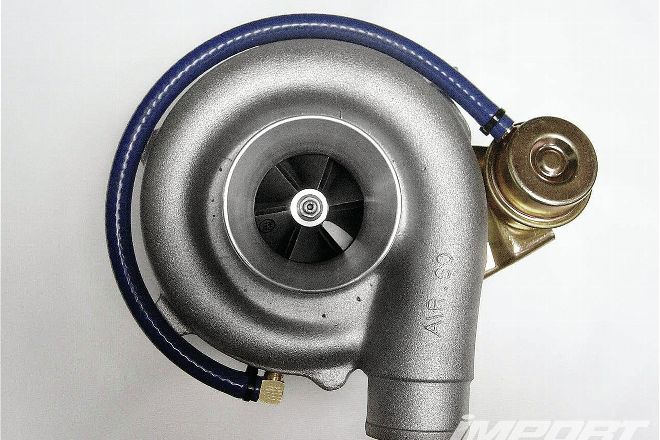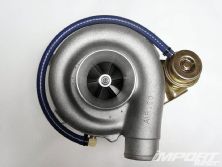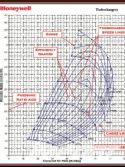Some facts you might not know about our resident tech guru:
- Eric Hsu can play Xbox Live on a Motec M800.
- Every time Eric Hsu answers a stupid question, a kitten spontaneously combusts.
- When cops pull Eric Hsu over, he laughs as they try to talk their way out of it. It never works.
- Eric Hsu eats cereal bowls for breakfast. Not bowls of cereal.
- City governments pay Eric Hsu to park wherever the hell he wants.
- If Charlie Sheen is winning, it’s because Eric Hsu isn’t playing.
 |
Compressor Surge and more - Question It
|
Compressor Surge and more - Question It
Wanna know what’s up?
questionit@importtuner.com
This Month’s Winning Letter
Compressor Surge
I’m trying to understand compressor surge. My basic understanding is that when the pressure behind the compressor drops to below the outside pressure, it will cause air to travel the opposite direction. Most examples involve airplanes dropping out of the sky, but other than engine performance dropping off, can either the engine or the turbo be damaged by this phenomenon? I want to ensure I don’t cause damage to my 300ZX TT's GT-675RS turbos.
-John Tacchi
via importtuner.com
I’m not quite sure what you mean by “behind the compressor”, but compressor surge occurs when it is beyond the compressor’s ability to deliver airflow stably. Flow becomes unstable when a compressor is run to the left or above the surge line on a compressor map. When flow becomes unstable, you can hear the audible flutter or “barking” from the inlet of the turbo. Surge can occur in one of two situations: 1) under load, when the compressor is being run at a high shaft speed and the compressor cannot deliver stable flow to the engine because that point is to the left or above the surge line, and; 2) when the throttle is quickly closed in boost which momentarily drives the compressor way to the left of the surge line. The first situation can also vary significantly depending on how efficiently your engine breathes, so it isn’t going to be the same point from car to car. Atmospheric pressure at the inlet of the compressor affects when a compressor surges. With more pressure, the surge line moves to the left and vice versa. In other words, your compressor will work much better in lower elevations, such as Santa Monica, CA, versus the Rocky Mountains in Denver.
Wheel/blade shape and housing design are factors that can affect where a surge line is on a compressor. A compressor section that is optimized for flow at high shaft speeds might have the surge line toward the right of the map. A compressor section optimized for a wide operating range may have its surge line moved over to the left, but it might also have lower overall airflow at any shaft speed. Compressor housings with ported shrouds can help to move the surge line to the left, but do so at the sacrifice of peak compressor efficiency. As with anything else, it’s difficult to have your cake and eat it too. Newer turbo models like the BorgWarner EFR and Garrett GTX offer “wider” compressor maps that give you the best of both worlds.
Monster Machine
Due to some unforeseen spending, I was unable to afford the Nismo Z I was saving for. I recently purchased an ’11 Scion tC as a more affordable daily driver. I want to modify it, but am not sure which parts menu will equal the 300 hp I want out of it. I have looked online for parts, but I would hate to spend money on components that won't play nice with each other. Is the tC capable of 300 horses without nitrous, turbo, or other engine mods?
-Yonierikz
Fort Drum, NY
Getting 300 hp is probable out of a modern, normally aspirated 2.5L engine, but unless somebody’s done the development already, you’ll be on your own path of trial and error, which can be costly and disappointing. If a company has already developed the engine to 300 hp, then all you have to do is buy the parts and have the engine tuned accordingly. Your ’11 Scion tC puts out 180 bhp from the factory, so you’re looking for almost a 67 percent increase in power without a turbo, which means you’ll need to do a full build: pistons to raise compression, rods for greater strength, a ported head for greater airflow, big cams for airflow, a 4-1 header and open exhaust to improve exhaust flow, and more. Full builds are never cheap. With the amount of money you’ll need to spend, you could have bought a Nismo 370Z. I’m not sure how much you care about comfort, driveability, and legality, but a normally aspirated build will result in an engine that is probably loud (both exhaust note and mechanical noise), smelly due to fuel and blow-by fumes, and will not pass an emissions test of any kind due to valve overlap from the large cams. On top of all these negatives, a normally aspirated engine won’t live as long because you’d be revving the shit out of it to get into the sweet spot of the powerband. A turbo can provide the additional airflow for 300 hp without all the bullshit and cost, which is why it is such a popular modification for smaller-displacement engines. There’s a reason why everybody does it. On top of that, an engine with a turbo sized for the street generates substantially more torque than a normally aspirated engine almost anywhere in the powerband. Turbo system legality will depend on your particular state’s laws, but a turbo will have a greater chance of passing a tailpipe sniffer than a high-strung normally aspirated build any day. You’ll want to contact Descendant Racing (aka Chris Rado’s toy shop) in Torrance, CA, for an update on their new tC turbo kit for the ’11 cars.
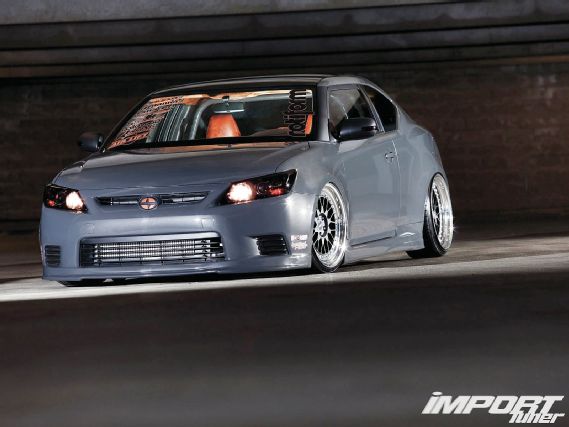 |
Compressor Surge and more - Question It
|
Compressor Surge and more - Question It
Internet Hype?
I was raised around muscle cars and own a fully restored ’66 Mustang V-8. I love import cars as well, but unfortunately have no experience in tuning them. I bought a ’93 240SX with the KA24DE and have plans on keeping it naturally aspirated, since it’s my daily driver/mess-around car. I’ve started upgrading the engine with a K&N air intake, header, and aftermarket pulleys. My friends recommended I get a performance chip. Are those reliable, or is a professional tune better?
-Abel Garcia
via importtuner.com
A professional tune is always going to be better, assuming the tuner is a genuine professional. Beware of generic “performance chips” from some of the domestic car chip companies. Oftentimes they ask $300 for a just sticker. The domestic chip tuners simply don’t have the experience with Japanese engines. For the 240SX, I would suggest you go straight to Jim Wolf Technologies in El Cajon, CA. Clark at JWT has been programming Nissan ECUs for almost 20 years now. They’re going to have exactly what you need, plus you can be sure you’re getting what you pay for.
Erratic Idle
I’ve been having problems lately with keeping my ’93 Civic EX idling. On the initial crank, it will rev really high then suddenly make a glug glug sound before completely dying out. A buddy I work with said it sounds like the fuel filter or pump has gone out, but I wanted to ask you before going out and spending money on parts that are not needed.
-Joseph
Brandon, MS
It’s virtually impossible for me to diagnose anything over email since there are many potential causes to the problem. Do you ever call the doctor and tell him what’s wrong without going to the doctor’s office? In many ways an engine is similar to the human body; it has many interconnected systems that rely on each other for proper functioning. So when you can call a doctor and he can give you a diagnosis over the phone, let me know and I’ll do the same. Just like your doctor, I’m going to be bullshitting you to get you off the phone, too.
Superior Chassis
I’ve been looking into building a drift car, and noticed that the S-chassis Nissans are popular. I know that they are good platforms, but I don’t know why they are good for drifting. I’m currently rocking an ’85 Celica Supra with the stock 5M-GE engine, but it has some problems going sideways, resulting in awful snap oversteer. What exactly makes the S13 to S15 chassis so popular for drifting?
-Dylan Miller
N.E. Oklahoma
What makes the S-chassis Nissans good drift cars? 1) They are cheap; 2) They handle well; 3) Drop in an SR20 or turbo the KA, and they offer plenty of power; 4) They greatly popularized the American JDM wannabe culture due to their popularity in Japanese videos and magazines.
Back in the ’90s, the S13, S14, and S15s were basically the equivalent of Japanese V-6 Camaros and Mustangs. The equivalent of the V-8 Camaros and Mustangs would have been the Skyline GT-R, Supra TT, and 3000GT. Domestic manufacturers didn’t believe in compact RWD sports cars in the ’90s, so I really have no domestic comparison for the S-chassis Nissans.
Anyhow, the suspension geometry is pretty straightforward on the S-chassis, and with the addition of a limited-slip differential, the car’s weight balance lends itself well to drifting. An LSD allows power to go to both wheels mid-turn when throttle is applied. This gives the driver double the patch of rubber to power through. An open diff will only apply power to one tire and once that tire is overwhelmed (i.e. it starts to spin and lose traction), the car will tend to snap away and the driver loses control. The MA60 Celica Supra is a considerably heavier car than an S-chassis and there was no limited slip factory option, so I assume you’re on the stock open differential. The MA60 uses a smaller 7.5-inch Toyota rear end that is no longer in production, but I would give the guys at OS Giken in Torrance, CA, a call to see if they have anything in Japan for the MA60. Otherwise, you might be able to fit an American positraction limited-slip or locker (e.g. Truetrac or Detroit Locker) since the Toyota 7.5-inch was widely used in the Toyota trucks, which have massive aftermarket support in the U.S. All of this doesn’t mean jack shit if your alignment is all over the place, though. A standard alignment shop will get you halfway there, but most of them just match the factory specs. I recommend you have the alignment done at a race shop that understands what you are trying to do with the car. They can also suggest suspension modifications to help you get and keep the car sideways, too. I’m almost certain they’ll tell you that you need to replace a bunch of bushings, too. Remember that an MA60 can be almost 30 years old now.
Muy CalientE
First off, I thought the King Taco reference in the Nov. ’10 issue was cool. I literally live four blocks from there and have spent quite a few nights killing tacos after some late-night drinking. Anyhow, I own an EK Civic with a stock B18C1, Jackson Racing Supercharger and tuned Hondata S300. It makes decent horsepower, but I want more. Aside from a port ’n polish and some upgraded valvetrain bits, I want to upgrade the factory cams, but considering the limited number of supercharged cars, finding good info is rather difficult. Do you suggest staying with stock cams, or should I go with Skunk2 Stage 2 cams?
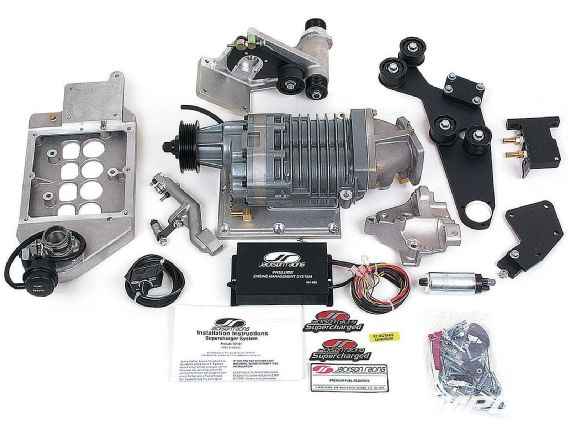 |
Compressor Surge and more - Question It
|
Compressor Surge and more - Question It
-Steven Aranda
via importtuner.com
King Taco has the best al pastor in town hands down. I have yet to find anywhere tastier in SoCal and Tijuana. Anyhow, if you’re looking for more power with a blower, I’d definitely recommend some cams, a good 4-1 header, a smaller supercharger pulley, and some more tuning. In my experience, I’ve found that any mild cam that works well in a normally aspirated application works even better in a supercharged application. The same goes for headers. With some good cams, a good header, and a good exhaust system, you might find the boost will go down a tick since the engine is breathing better. Remember that if the engine is breathing better, the blower (essentially an air pump, filling the engine with air) will need to spin faster to keep the pressure where it was before. A smaller supercharger pulley will help get the boost back up to previous levels.

